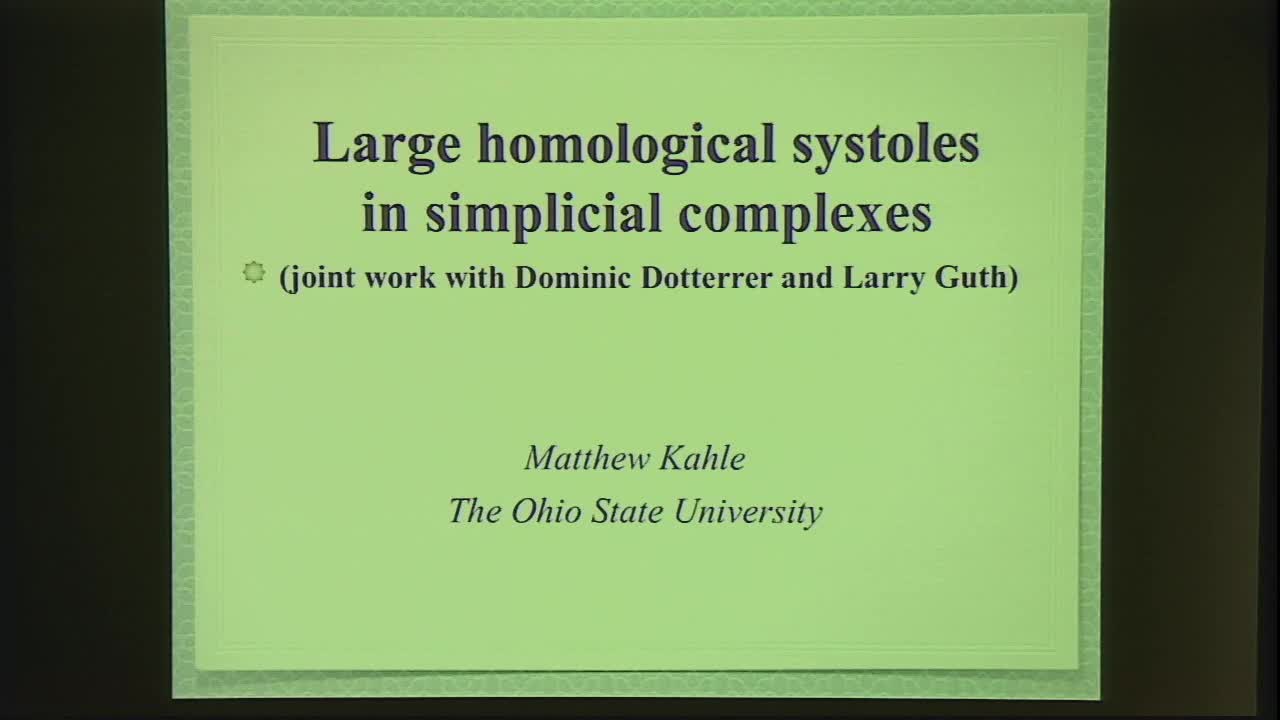Simplicial Complexes with Large Homological Systoles
Presenter
April 29, 2014
Keywords:
- Simplicial Complexes, combinatorics
MSC:
- 05E45
Abstract
(This is work in progress with Dominic Dotterrer and Larry Guth.)
In a graph, the girth is the length of the smallest cycle. How large
the girth can be for a graph on n vertices and m edges is a very well
studied problem in combinatorics. More generally, in a d-dimensional
simplicial complex, we define the d-systole to be the smallest
nonempty collection of closed d-dimensional faces whose union has no
boundary, and we measure the size of a systole in terms of volume,
i.e. the number of faces. It is natural to ask what is the largest
possible d-systole for a simplicial complex on n vertices with m
top-dimensional faces.
We show the existence of simplicial complexes with large systoles
using random simplicial complexes with modifications, and we also
require some new results on estimating the number of triangulated
surfaces on a given number of vertices. On the other hand, we show
that the systoles can not be much larger than this, so these results
are essentially optimal. In the higher-dimensional setting, there are
surprising contrasts with the classical graph theoretic picture, and
in particular the systoles can be quite large.
